What a couple of years it's been for Merica Labz, who kicked off their "restoration" with the fantastic rebranding of their BOOM Energy Drink and epic upgrade of Red, White, & Boom pre-workout supplement. Followed by other great hits like a new and improved Patriot's Whey, the new Super Sized mass gainer, and of course the Liberty Ballz natural testosterone booster, and you have a brand that's firing on all cylinders.
Merica Labz Suprimos are back and better than ever
But what about those aminos? In Merica Labz land, they're known as Suprimos, and they're next to get the new branding experience.
They also come in two incredible new flavors we've seen in other Merica Labz supplements, Daytona Beach and Patriot Punch.
Let's dig into the mix that has 10 grams of EAAS (from 7 grams of BCAAs and 3 grams of other EAAs), which comes with a big dose of taurine and the largest Aquamin dose we've seen to date. But first, check prices and flavor availability with PricePlow:
Merica Labz Suprimos – Deals and Price Drop Alerts
Get Price Alerts
No spam, no scams.
Disclosure: PricePlow relies on pricing from stores with which we have a business relationship. We work hard to keep pricing current, but you may find a better offer.
Posts are sponsored in part by the retailers and/or brands listed on this page.
Ingredients
In a single 1-scoop serving of Suprimos from Merica Labz, you get the following:
-
Branched-Chain Amino Acid (BCAA) 2:1:1 Blend – 7,000 mg
When describing the ratios of a branched-chain amino acid (BCAA) blend, the formula goes leucine:isoleucine:valine – these three amino acids are the BCAAs.
So here, as usual, we have more leucine than anything else. And that's a good thing. Why do we want a higher proportion of leucine? Put simply, it's the most anabolic of the BCAAs. When you're in an anabolic state, it means you're in the process of building and maintaining muscle mass.
Although all three BCAAs exert anti-catabolic effects[1-3] and increase athletic endurance,[4-6] leucine is the most effective for stimulating new muscle synthesis.[7-9] As we age, it's normal to need more and more leucine to achieve the same end result.[10]
Leucine initiates muscle protein synthesis by activating mTOR, the mammalian target of rapamycin,[11-13] which is basically the "master switch" for our body's anabolic response to exercise.
-
Essential Amino Acid Blend – 3,000 mg
One of the reasons people take BCAA supplements is that they're "essential", which means that our bodies cannot synthesize them endogenously (on their own). Instead, we must obtain these aminos from an external source like food or supplements.
Although the three BCAAs are all essential amino acids, they're not the only essential amino acids. As it turns out, there are six others.
Amongst these primary amino acids, the essential amino acids are in red. Leucine, Valine, and Isoleucine are the three Branched-Chain Amino Acids.
All nine essential amino acids are important for optimal muscle synthesis,[14] and beyond that, each has its own unique properties.
-
L-Lysine – 1525 mg
Lysine is an important precursor to carnitine,[15] a quaternary ammonium compound that comes with a multitude of benefits for human health. Like most of the other essential amino acids, lysine helps with performance and recovery.[16,17]
Lysine is also centrally involved in calcium metabolism, where it both helps the body absorb calcium[18] and also regulate where the mineral is deposited. For example, itt keeps calcium out of your veins and arteries and shuttles it to your bones, where it's supposed to be.[18]
Because lysine also plays a role in the production of collagen,[19] it's argued that lysine is needed for the structural support of your entire body because muscles basically hang on a scaffolding of bones and collagenous tendons!
Both bones and tendons are strained by intense exercise, whether it's high-impact cardio or weightlifting. So giving your body some extra lysine is a good way to help prevent the kind of catastrophic injury that can follow improper recovery.
-
L-Threonine – 1000 mg
Glycine and serine are two highly beneficial amino acids that are crucial for the proper functioning of the central nervous system. Without threonine, your body can't make either one of them.[20]
You also need threonine for maximum muscle protein synthesis,[21] so supplementing with it can help you avoid anabolic bottlenecks.
-
L-Phenylalanine – 200 mg
Since phenylalanine is tyrosine precursor,[22] and tyrosine helps increase levels of dopamine, epinephrine, and norepinephrine,[23] increasing your phenylalanine intake is a good strategy for getting more of these key neurotransmitters. Even if you're using your BCAA for post-workout recovery, it can still potentially help your next workout by keeping your phenylalanine stores full.
-
L-Histidine – 100 mg
Histidine is an important precursor for carnosine, a protein building block that can increase athletic endurance and speed recovery by "buffering" lactic acid in muscle tissue.[24] Animal studies have demonstrated that histidine deficiencies can impair muscle protein synthesis, and furthermore, elevated histidine levels can accelerate muscle protein synthesis, making it faster than baseline.[25] So histidine is another amino acid that can be useful as a supplement, even when you're not deficient.
-
L-Tryptophan – 100 mg
You thought Alpine Pew Pew Merica Energy was the original of this flavor? Not so fast! It's been out with Suprimos for far longer!
Old wives' tales notwithstanding, tryptophan doesn't actually make you sleepy after eating certain foods, but it does increase pain tolerance[26] and can improve mood by upping serotonin production in the brain.[27]
-
L-Methionine – 75 mg
The amino acid methionine is an antioxidant, helping protect your body from the oxidative stress associated with exercise.[28] Methionine is eventually used by your body to produce taurine and cysteine, two amino acids that are important for optimal performance and recovery.
Methionine is also a precursor for carnitine,[29] an important substance that helps your metabolism by transporting fatty acids. We discussed the amino acid above. Methionine intake and carnitine blood levels are tightly correlated.[29]
-
-
Taurine – 2500 mg
Nutritional superstar, taurine, is not included in the "essential amino acid" blend because it's conditionally essential,[30] meaning that although your body can create some taurine on its own, it can't produce enough of it. To achieve optimal taurine status, you need a little extra from food or supplements. Experts agree that for our purposes, more taurine is usually better.
The first thing you should know about taurine is that it's awesome for mitochondrial health.[32] This is a really big deal since the ability of your mitochondria to produce cellular energy affects every single process in your body, which is basically a machine designed to fight entropy. In order to do that, the body needs as much energy as possible. Over many years, energy insufficiency at the cellular will cause the decline in whole-body function that's associated with aging.
Taurine is also an osmolyte, meaning that it maintains the proper amount of water in your cells.[33] An osmolyte is basically the opposite of a diuretic.
Obviously, cellular hydration goes a long way toward optimizing athletic performance and recovery. So partly because of its status as an osmolyte, and partly because of its pro-mitochondrial effects, taurine can significantly increase physical endurance.[31]
It's updated, and bringing more energy and pumps than ever! Meet the latest and greatest version of the Red, White, & BOOM Pre Workout!
Taurine is distributed to pretty much all tissues in your body. Some of its other roles include helping protect cells and their membranes against oxidative damage and promoting calcium signaling between cells to facilitate muscle contraction.[31,33-36]
Antioxidant activity of taurine is part of the reason it's able to protect the brain against inflammation and stress, thereby increasing focus. It also upregulates the brain's GABA receptors and makes neuronal synapses more active.[34]
The upshot of all these effects on the brain is that taurine helps new neurons grow, even the presence of neurotoxins. Also, it has been identified as a crucial factor in optimal brain development.[37]
Lastly, taurine upregulates nitric oxide,[35] which any gym rat knows is crucial for a great pump and faster recovery.
-
Aquamin Sea Minerals – 1000 mg
The Aquamin sea mineral complex is sourced from seaweed and contains mostly calcium and magnesium, with trace amounts of boron and manganese.[38] Studies on Aquamin supplementation — including these four minerals — have shown that it's capable of significantly improving bone and joint health.[38-40]
Presenting the updated Stars 'N Pipes formula from Merica Labz - now with HydroPrime glycerol and Nitrosigine for incredible pumps from multiple angles!
Based on the theory that boron interferes with the binding of testosterone to sex-hormone binding globulin,[41] men usually take it in order to raise free testosterone levels in the blood.[42] The limited research that's been done on this subject indicates that boron might actually be capable of raising free T, but we need to see a lot more research before endorsing such a declaration.
Exercise can deplete your body of all these minerals and more,[42,43] especially if you're doing intense cardio, so it's a great idea to pack these minerals in with BCAAs.[44]
According to the label, you are getting:
- 100 milligrams of potassium (2% DV)
- 100 milligrams of sodium (4% DV)
- 170 milligrams of calcium (17% DV)
from Aquamin.
But don't miss the magnesium that comes next:
-
Magnesium (from Magnesium Glycinate) - 160mg (40% DV)
The label sneaks in a quite large amount of magnesium coming from magnesium glycinate, our preferred form of magnesium. Each scoop gets you 160 milligrams of elemental magnesium, which is 40% of the US RDA - quite an excellent addition to your diet.
With magnesium glycinate, we get the benefits of both the mineral and the amino acid it's bound to - glycine! Studies show that it has far superior absorption compared to cheaper magnesium oxide.[45]
Let's break it in half to look at the benefits of both parts inside:
-
The magnesium side
NEVER BIG ENOUGH. Get ready for a mass gainer that's made from whole food sources: Merica Labz Super Sized!
Magnesium leads to numerous metabolic benefits, including reduced blood sugar, lower blood sugar and insulin levels, and overall increased insulin sensitivity.[46-52] In terms athletic effects, there are also benefits like improved lactate clearance[53] and increased muscle mass and power.[54]
Too many Americans are magnesium-deficient, which can lead to added anxiety, stress, and overall fatigue.[55-57] Normally, you wouldn't expect your intra workout supplement to assist with this, but 40% of the daily recommended value can certainly put a huge dent on deficiency.
-
The glycine side
The other half of the magnesium glycinate molecule is glycine, a conditionally essential amino acid that has similar stress-reducing, metabolic-supporting effects when taken. It's conditionally essential because the body can produce it from other aminos, but we almost always do better with more - especially since we don't eat as many glycine-rich food sources as we should.
Glycine assists with protein synthesis, especially for collagen, elastin, and other connective tissue.[58] It makes sense to have a source inside of a supplement like Suprimos.
Much of glycine's research is centered around improved sleep.[59-70] However, the clinical dose is generally 3 grams per day taken before bed, which is more than we'll have here, but we'll take any improvements we can.
Users may also see cognitive improvements when using glycine,[71] but again that was with 3 grams of glycine per day.
Overall, this is an incredible form of magnesium that not only provides better bioavailability and absorption, but its "carrier" amino acid also has incredible benefits itself! We have much more on this ingredient, which is in our guide titled Magnesium Glycinate: A Master Class in Magnesium & Glycine.
-
Flavors available
Suprimos: The Supreme Aminos
Suprimos is a solid EAA formula that hits added hydration without costing an arm and a leg. This is the more "simple" EAA formula, as opposed to something more complex like Core INTRA.
Oftentimes, you just want to keep the amino acids flowing and hydration on point. This does that quite well, given the largest-ever dose of AquaMin we've covered yet. But what most users may miss is the incredible magnesium glycinate inside, which we'll never say no to.
So if you're ready for some supreme aminos that keep it smart and simple, take a look at the refreshed Merica Labz Suprimos.
Merica Labz Suprimos – Deals and Price Drop Alerts
Get Price Alerts
No spam, no scams.
Disclosure: PricePlow relies on pricing from stores with which we have a business relationship. We work hard to keep pricing current, but you may find a better offer.
Posts are sponsored in part by the retailers and/or brands listed on this page.
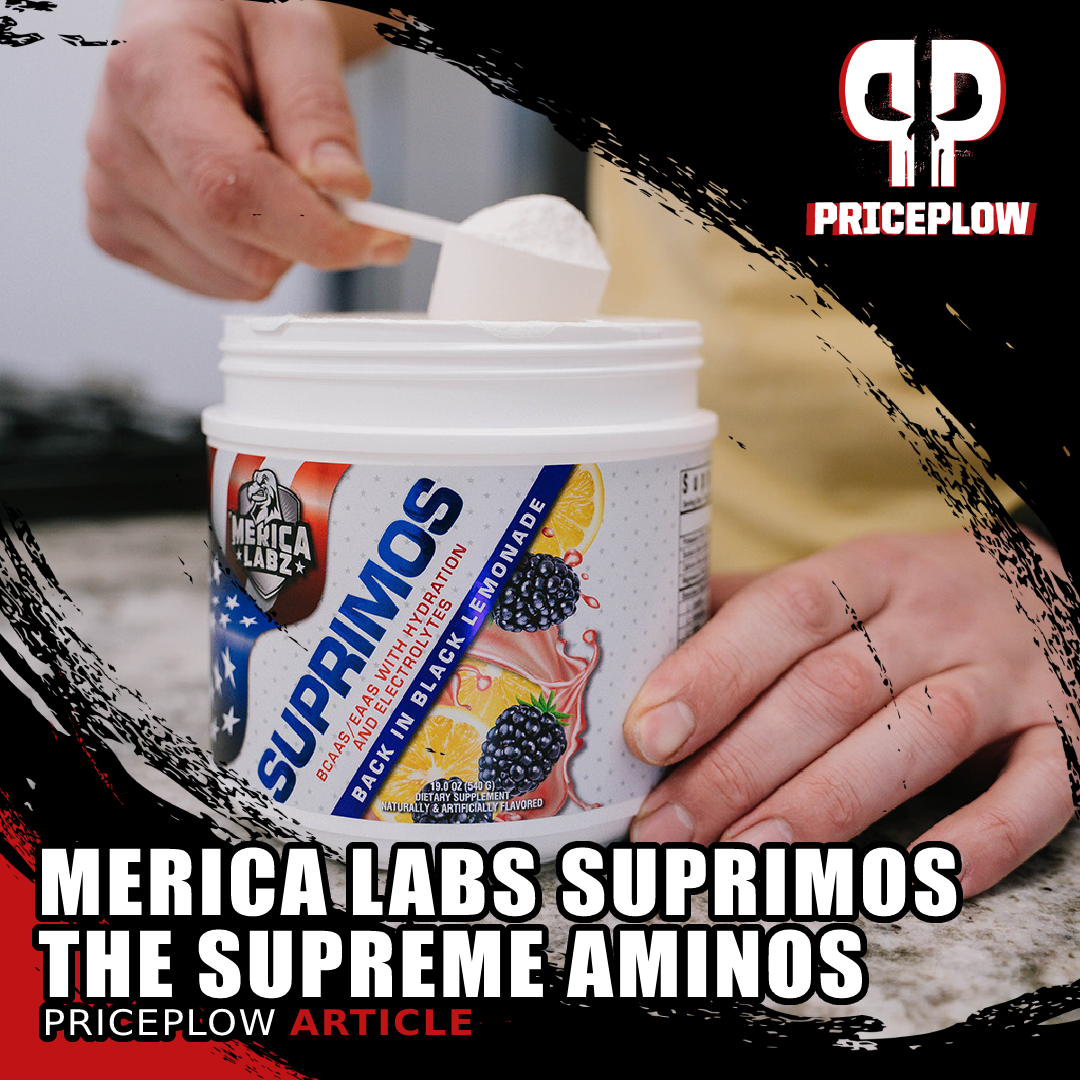
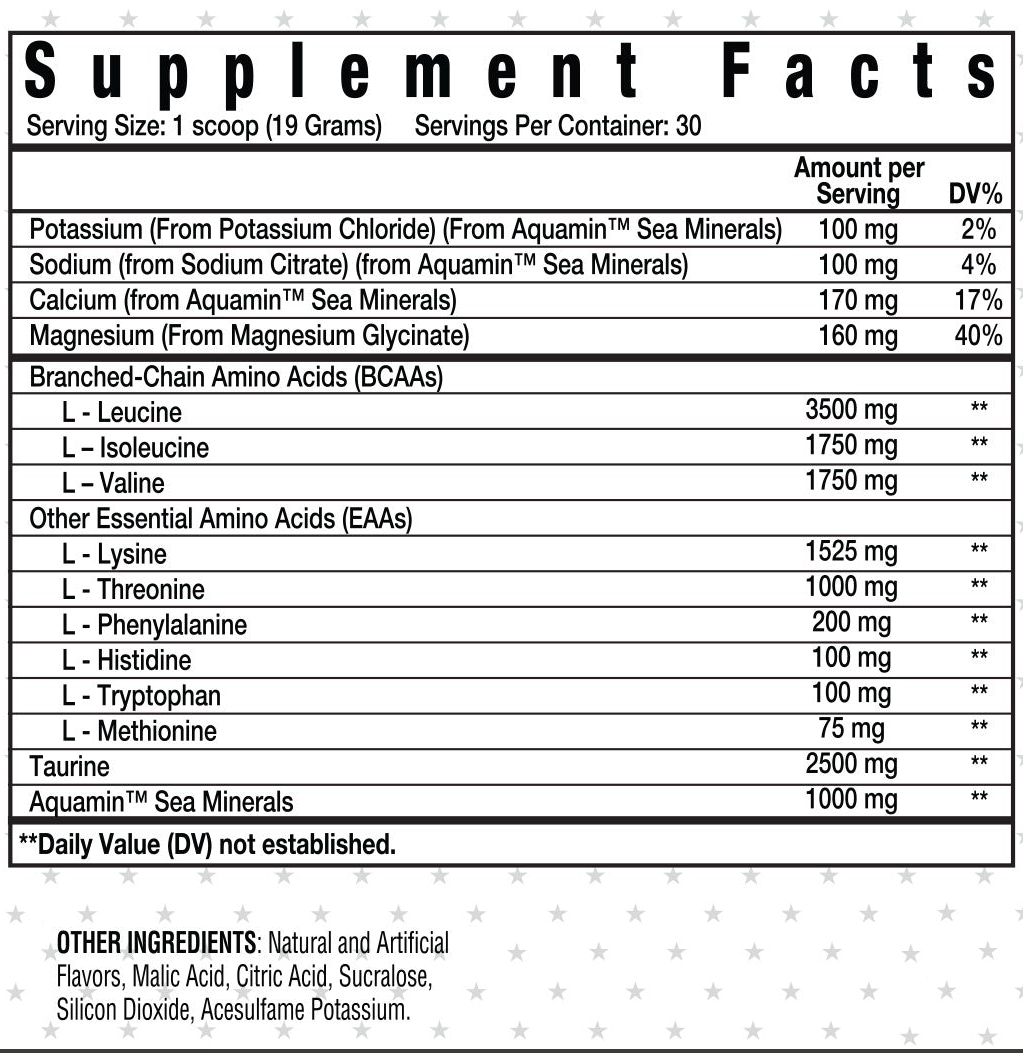
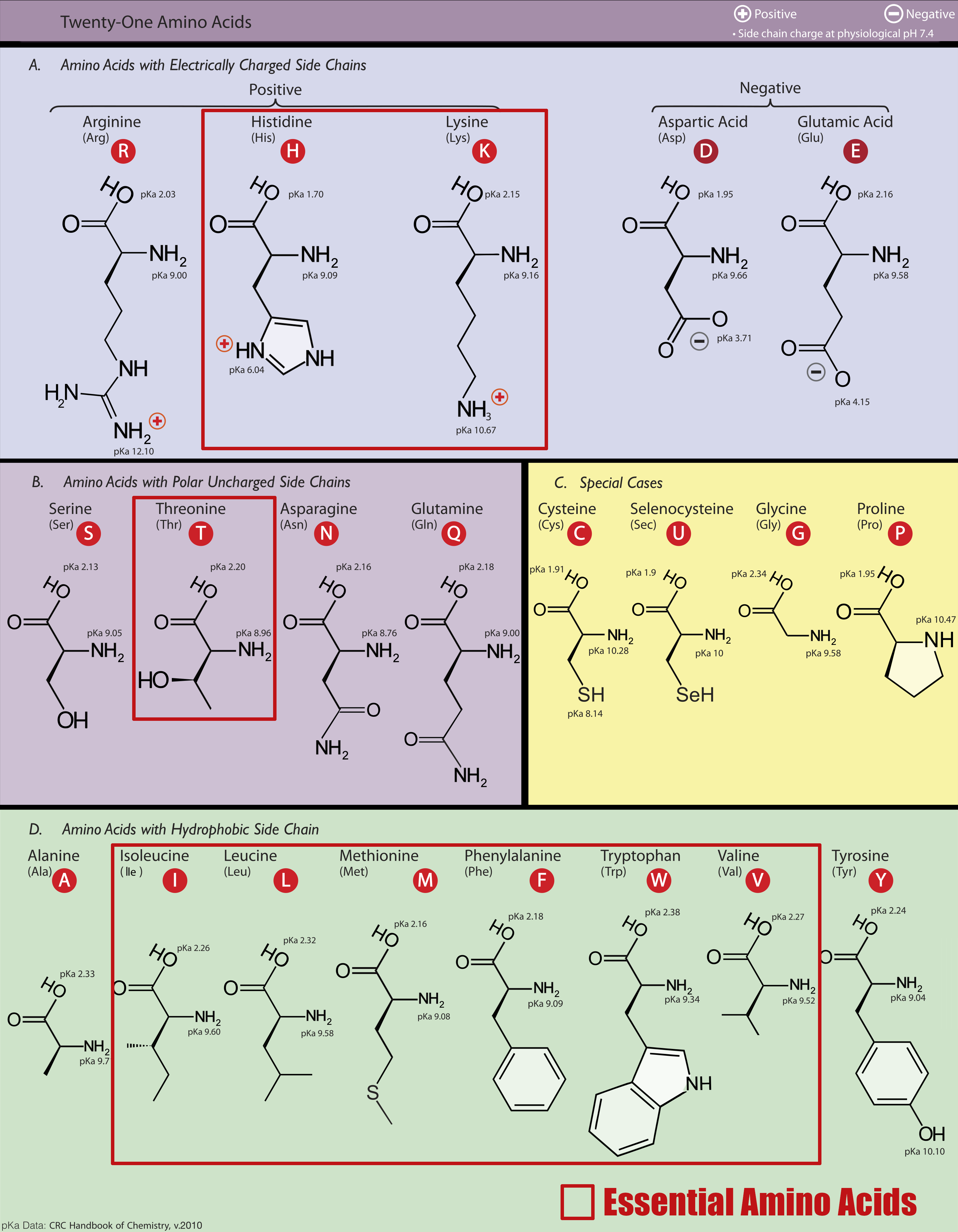
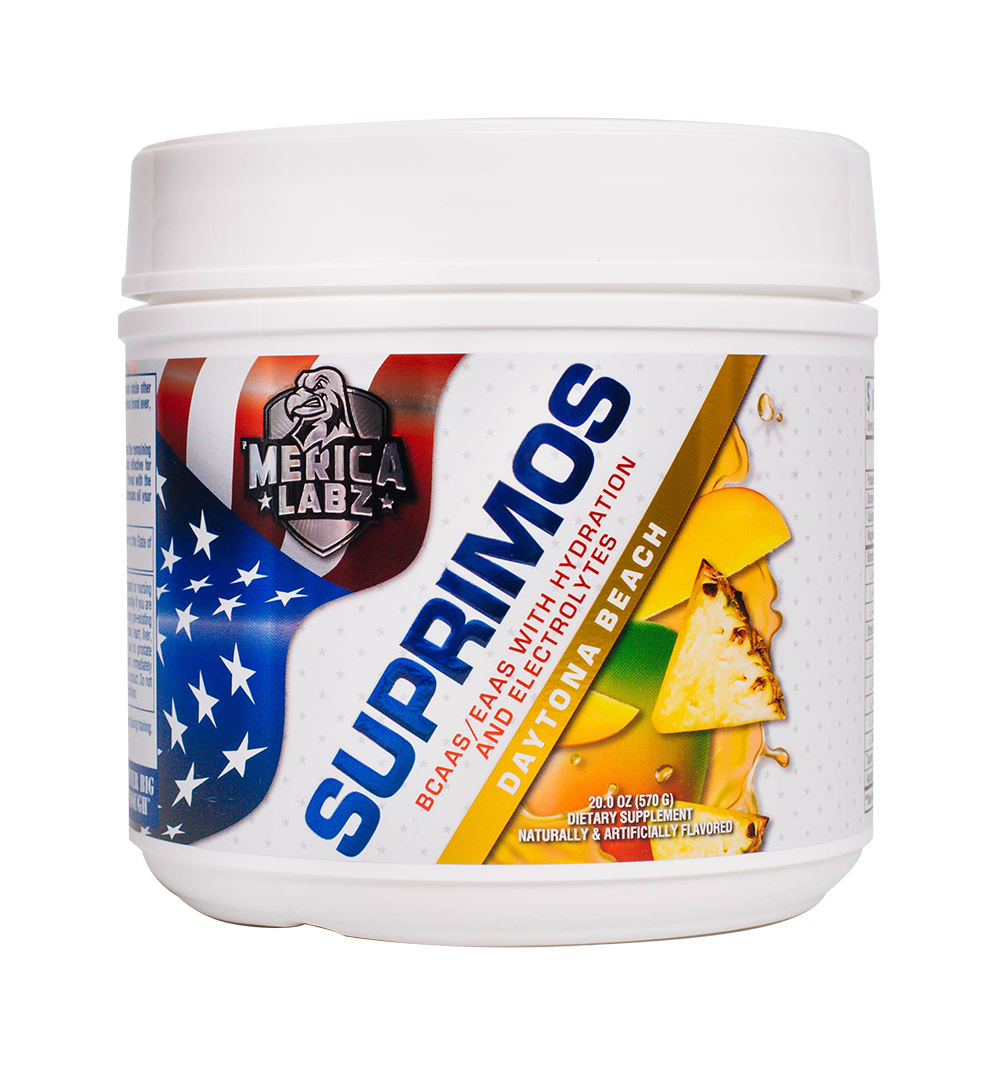

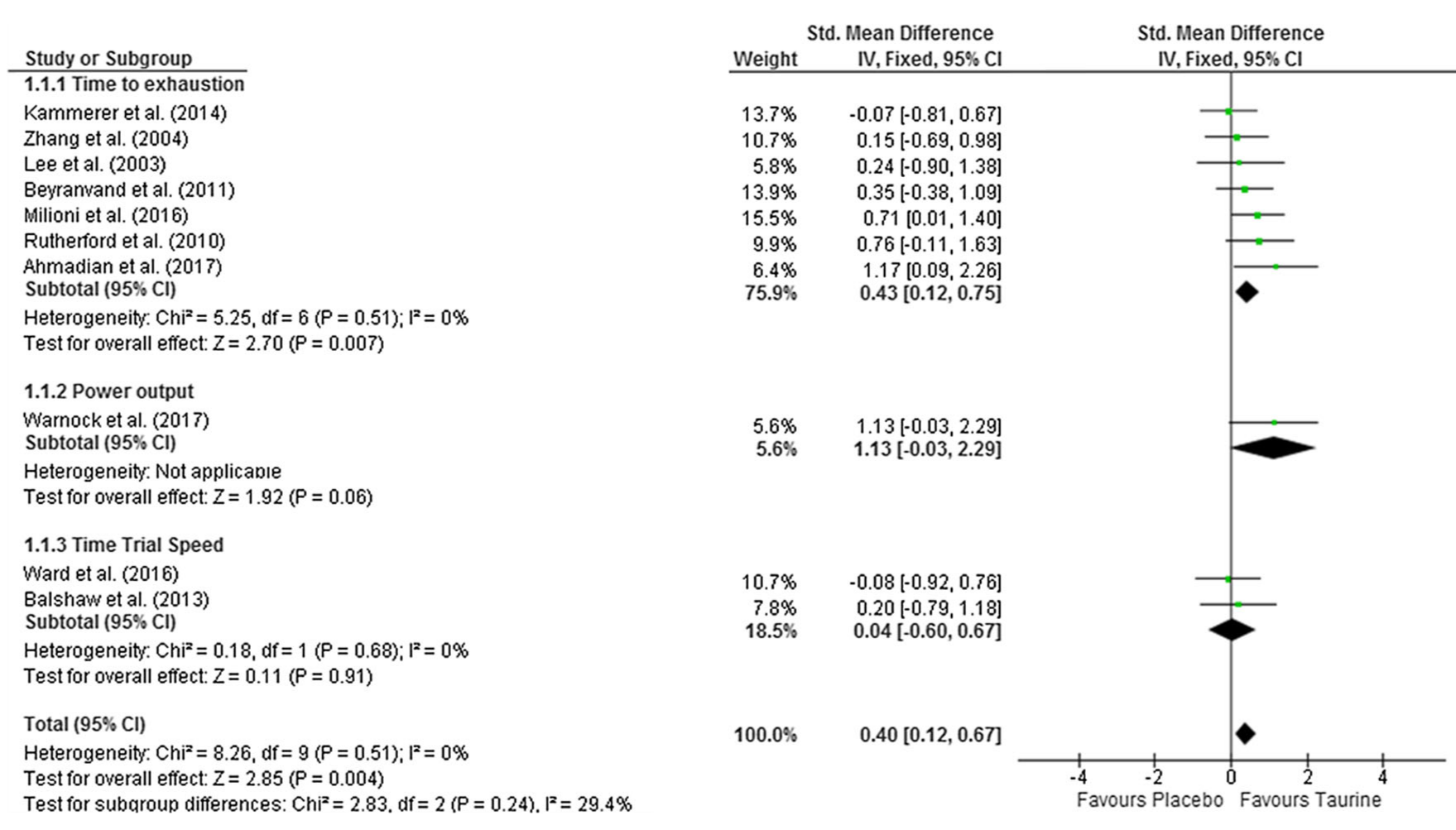


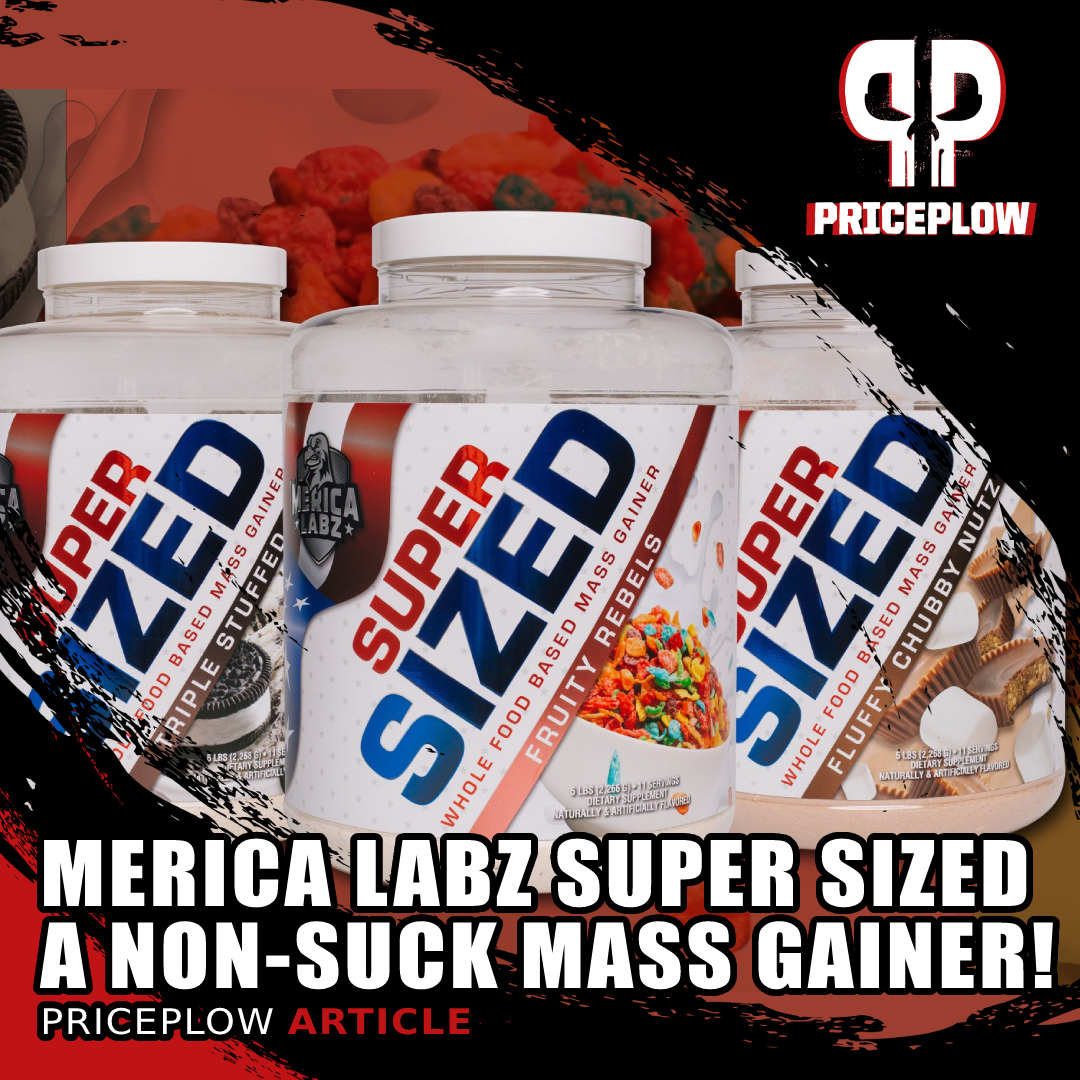
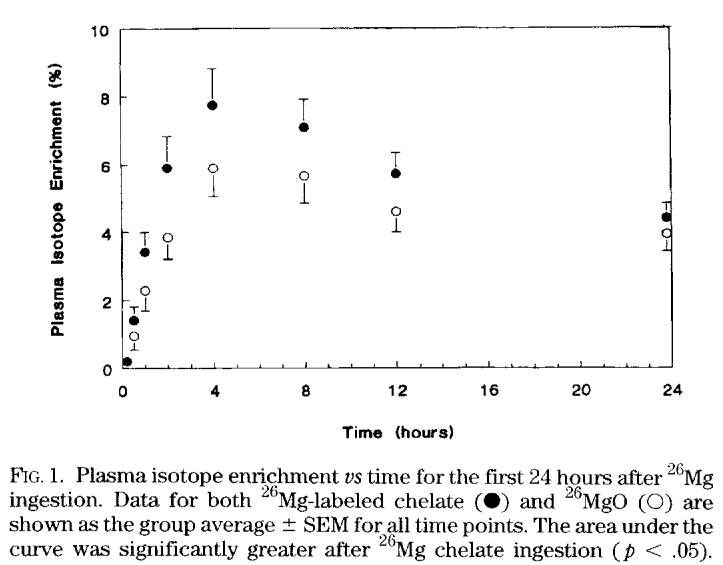
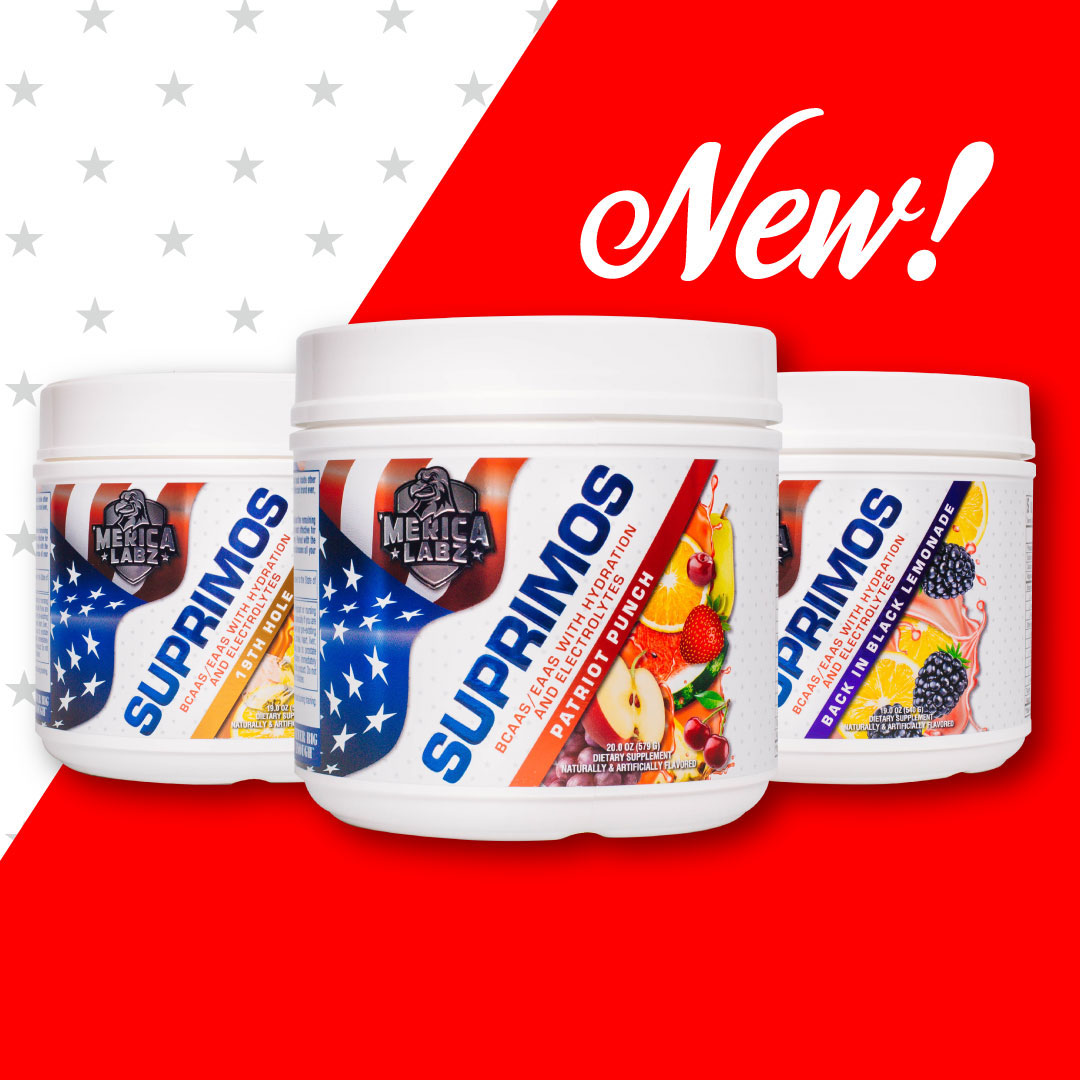


Comments and Discussion (Powered by the PricePlow Forum)